Technology Used in Canon Multimedia Projectors
Technology Used in Multimedia Projectors
Canon's multimedia projectors achieve projection that brightly illuminates large screens all the way to their four corners with high-definition images. The company's proprietary optical system and lens technologies help to ensure ease of use and beautiful images.
2018/12/27Featured Technology
AISYS Optical System (Aspectual Illumination System)
#Imaging technologies#Mechanical engineering#Electrical engineering#Physics
Multimedia Projectors Offering High Luminance, High Image Quality and Compactness
In 2004, Canon combined optical technologies developed for its cameras to implement an LCOS (Liquid Crystal On Silicon) reflective liquid crystal panel in the image display device1 of its multimedia projectors. Canon has since pursued projector development to achieve high luminance, high image quality, and compactness.
Images projected using LCOS do not have the black grid-like shadows often seen with conventional media projectors, which means the images are smooth and beautiful.
Canon has also developed AISYS, an optical system designed to maximize LCOS performance. This system consists of an illumination optical system, which controls light from the light source, and a color separation/combination optical system, which separates and combines the three primary colors of the light (RGB).
AISYS makes it possible for Canon to develop multimedia projectors that offer high luminance and high image quality in compact body designs.
1 Image display devices
Liquid crystal panels used to display images can be either transmissive or reflective. Since drive circuits lie between the pixels on transmissive panels, the parts that do not transmit light create a grid-like pattern in the projected image. With reflective panels, the drive circuits are behind the pixels, enabling the panel to project a smooth, seamless image.
Illumination Optical System
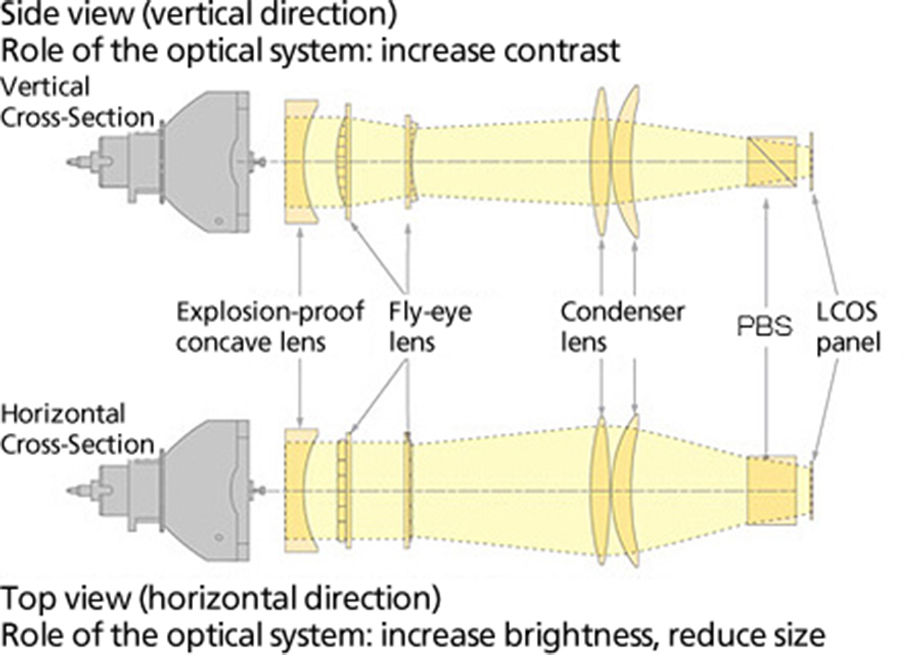
With AISYS, when light strikes the LCOS panel, it is independently and efficiently controlled both vertically and horizontally to achieve high-luminance, high-resolution projection and compactness. Vertically, light runs almost parallel to the optical axis to prevent light leakage2 and maintain contrast. Horizontally, light from the projection lamp is converged to increase brightness.
2 Light leakage
The leakage of light onto the image surface when displaying black.
With LCOS panels and PBSs (Polarization Beam Splitters), light beams with a large angle of incidence cause a lot of light leakage and reduce the contrast of the displayed image.
Color Separation/Combination Optical System
Multimedia projectors that utilize the LCOS method typically divide the light from the lamp between three paths, one for each primary color: R (red), G (green) and B (blue). However, with Canon's LCOS method, the light is divided between two paths, one for R + B and one for G. This makes it possible to reduce the volume of the optical unit.
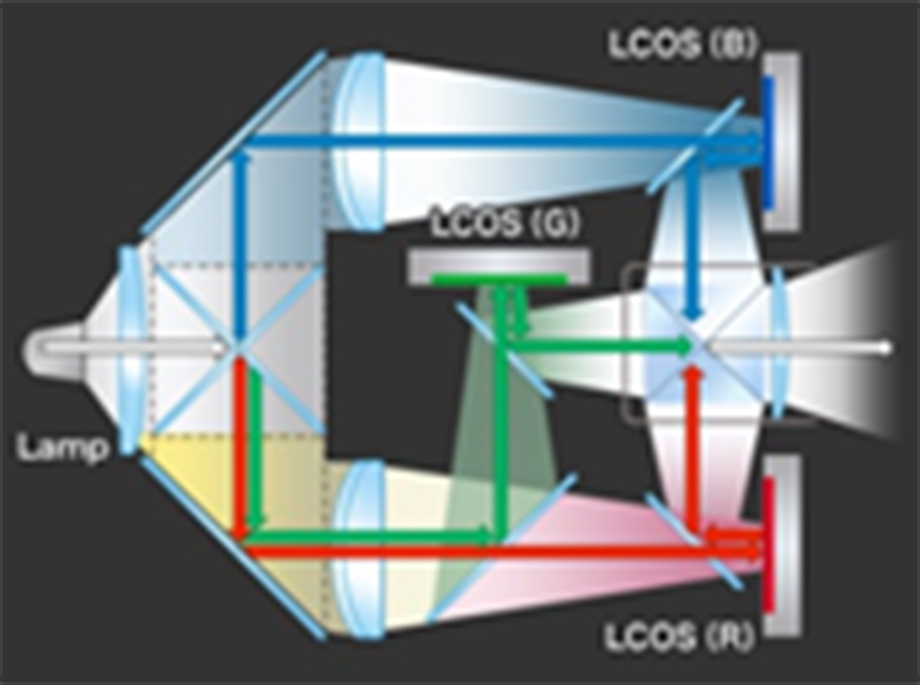
Typical LCOS Method
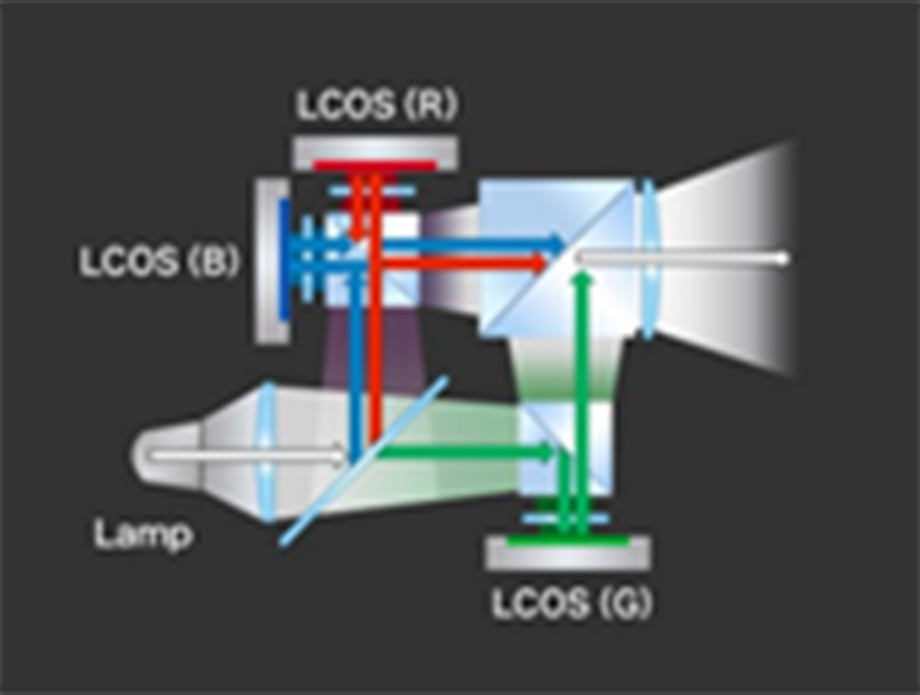
LCOS Method Using AISYS
New AISYS
The latest version of AISYS features higher illumination efficiency than past versions, a streamlined overall optical system and a platform standardized for both lamp-light-source and laser-light-source models. This makes it possible to standardize the interchangeable lenses and ceiling mounts, which simplifies installation when introducing multiple projectors.
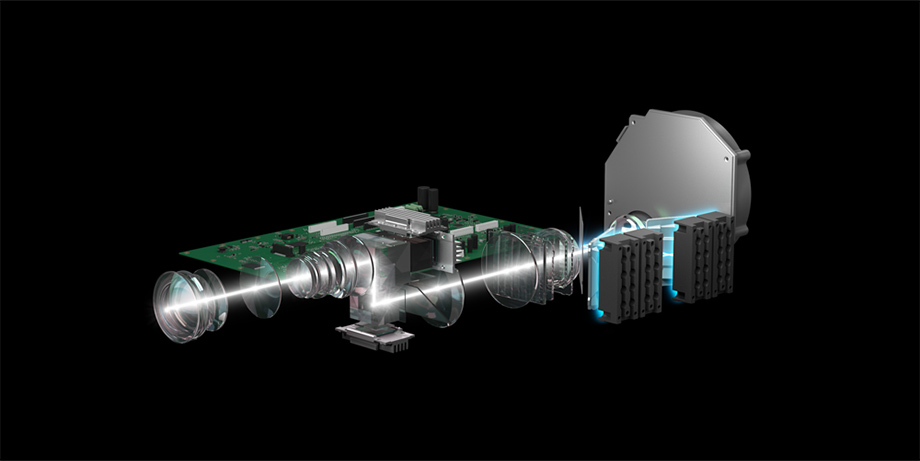
Lamp light source

Laser light source
Laser Light Source System
#Imaging technologies#Electrical engineering#Physics
Contributing to Making Multimedia Projectors More Compact and Lightweight
Canon's Proprietary Compact Laser Light Source System
The reflective fluorescent wheel and laser-light-source optical system developed by Canon make it possible to efficiently generate white light while making the multimedia projector itself more compact and lightweight.
Projection Lenses
#Imaging technologies#Physics
Red-Line Lenses Achieve Outstanding Image Quality
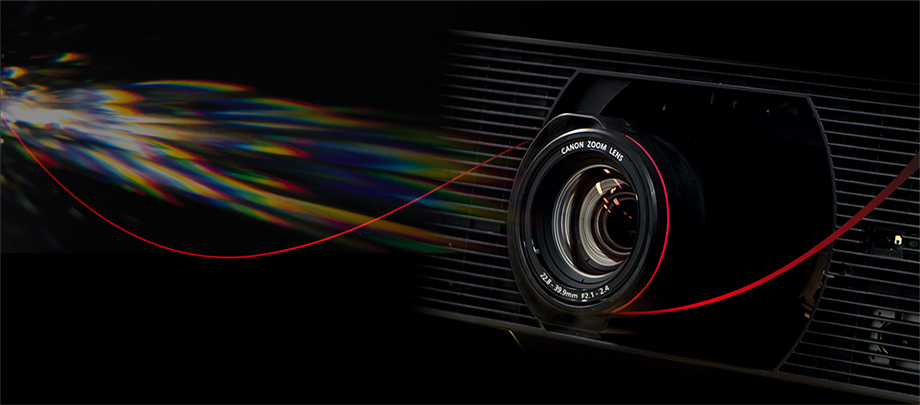
Created for professionals who demand nothing less than the finest image quality, the design of these lenses incorporates Canon's red line, a vivid line symbolizing quality that is only used to adorn the company's top-of-the-line products.
Canon's 4K lenses and other lenses for multimedia projectors incorporate all of Canon's most advanced optical technologies to achieve outstanding image quality.
High-Precision Aspherical Lenses
Because multiple multimedia projectors are often set up and used in combination, it is important that images are projected without distortion from corner to corner.
To overcome this issue, Canon has equipped its multimedia projectors with high-precision aspherical lenses developed using high-precision grinding technologies cultivated by the company for its observatory mirrors and EF lenses.
This has made it possible to reduce the amount of image distortion to one pixel or less, even when projecting high-definition 4K images.
UD Lenses
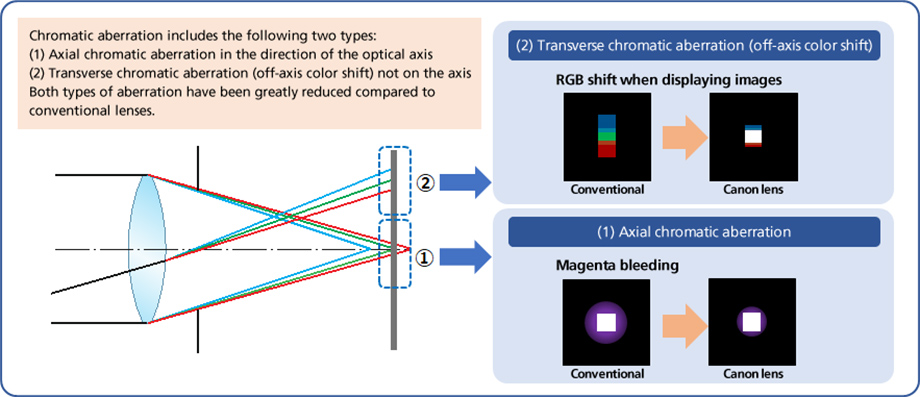
RGB light that passes through a lens has a different refractive index depending on its wavelength, and this can cause color bleeding, or chromatic aberration, when projecting onto a screen. Major types of chromatic aberration include axial chromatic aberration, which is aberration in the direction of the optical axis, and transverse chromatic aberration (off-axis color shift).
Correcting the chromatic aberration in high-resolution 4K images takes even more effort.
Canon successfully reduced chromatic aberration in its projectors by employing its UD (Ultra Low Dispersion) lenses, which minimize the phenomenon.
Floating System
With typical multimedia projectors, the optical performance changes depending on the throw distance. In particular, there is a tendency for aberration to occur when projecting at close range.

However, Canon's multimedia projectors incorporate a floating system that moves multiple lenses independently when focusing in order to minimize aberration.
This makes it possible to project high-resolution images at any throw distance.
